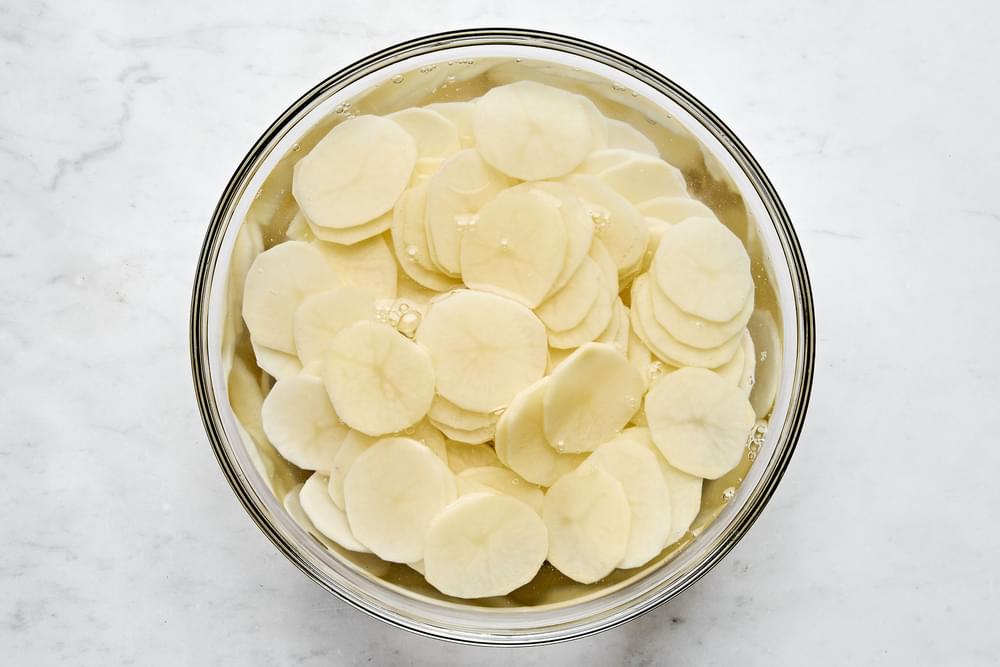Introduction
In the world of snacks, few things are as universally loved as potato chips. But what if you could elevate this simple treat to a whole new level? Enter Keripik Kentang Balado, a delightful fusion of crispy, thin-sliced potato chips coated in a vibrant, sweet and spicy sambal sauce. This recipe, which has been making waves in Indonesian kitchens, offers both a traditional and a quick alternative for those who want to enjoy this flavorful snack without spending hours in the kitchen.
Whether you’re a seasoned cook or a busy parent looking for a fun family activity, Keripik Kentang Balado is a must-try. The process of making it from scratch not only yields a delicious result but also brings people together, as seen in the experiences of many families who have tried it. In this article, we’ll explore how to make this addictive snack, including tips for success and even a shortcut using store-bought chips.
How to Make Keripik Kentang Balado from Scratch

The key to perfect Keripik Kentang Balado lies in the preparation of the potato slices and the sambal sauce. Here’s a step-by-step guide:
1. Thinly Slice the Potatoes and Soak in Water
Start by peeling and slicing the potatoes into very thin slices using a mandoline slicer. If you don’t have one, a sharp knife will work, though it may take longer and result in uneven slices. Once sliced, soak the potatoes in cold water for at least two hours, or overnight if possible. This step helps remove excess starch, ensuring the chips turn out crispy rather than soggy.
After soaking, drain the water and pat the slices dry with a paper towel. This prevents oil from splattering when frying.
2. Fry the Potatoes

Heat enough oil in a deep pan or wok until it reaches a high temperature. To test if the oil is ready, dip a chopstick into it—if it bubbles around the stick, the oil is hot enough. Lower the heat to medium before adding the potato slices in small batches.
Fry each batch until golden brown and crispy, then transfer them to a paper towel to drain. Repeat with the remaining slices. For an extra crunch, you can fry the chips a second time after they’ve cooled slightly.
3. Make the Sambal

In a separate pan, heat some oil and sauté finely chopped shallots for about a minute. Add kaffir lime leaves and fry for another 10 seconds. Then, add the rest of the sambal ingredients—such as sambal oelek, sugar, vinegar, and galangal powder—and cook until the mixture thickens into a syrupy consistency.
Once the sambal is ready, toss the fried potato chips into the pan, ensuring they’re evenly coated. Transfer everything to a serving bowl and let it cool completely before serving.
Tips for Success
To ensure your Keripik Kentang Balado turns out perfectly every time, follow these essential tips:
- Use a Mandoline Slicer: This tool ensures uniform thickness, which is crucial for even cooking.
- Bake for Extra Crispiness: After frying, place the chips on a baking sheet and bake at 325°F (160°C) for 5 minutes. This step helps preserve their crispiness.
- Avoid Overloading the Pan: Frying in small batches prevents the oil from cooling down too much, which can lead to greasy chips.
Short-Cut Keripik Balado Using Store-Bought Chips

For those short on time, there’s a convenient shortcut: use store-bought potato chips. Simply prepare the sambal as described and toss the chips into the sauce. This method saves time while still delivering that signature sweet and spicy flavor.
When choosing store-bought chips, opt for original flavor varieties without added seasonings like sour cream or cheese. This allows the sambal to shine through without any conflicting flavors.
Final Thoughts
Keripik Kentang Balado is more than just a snack—it’s a cultural experience. Whether you choose to make it from scratch or take the shortcut, the end result is a crispy, flavorful treat that brings joy to any gathering. Plus, it’s a great way to introduce kids to spicy food in a fun and engaging manner.
So, grab your mandoline, gather your ingredients, and get ready to enjoy a snack that’s as delicious as it is satisfying. And remember, the best part of the recipe is the shared experience with family and friends. Happy cooking!






